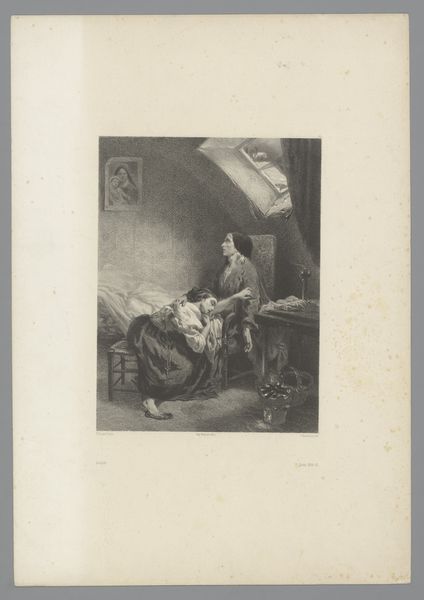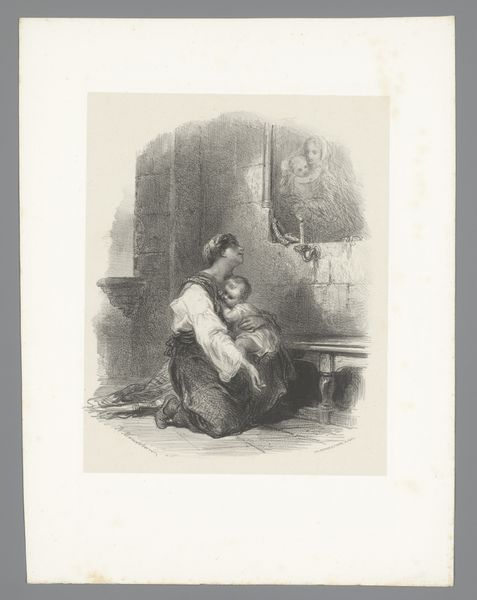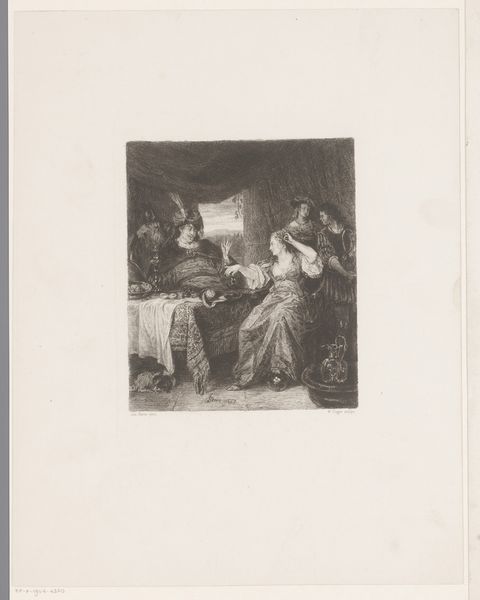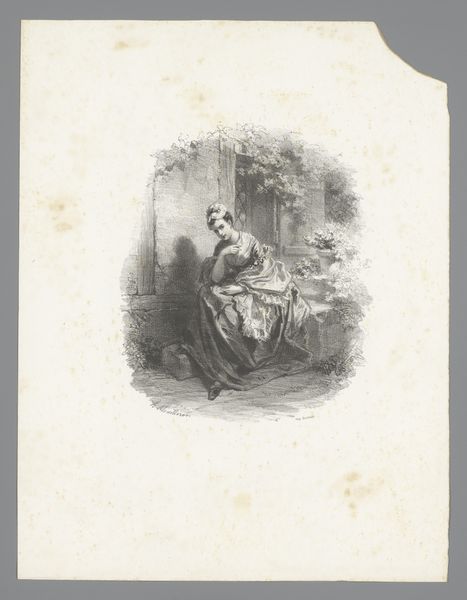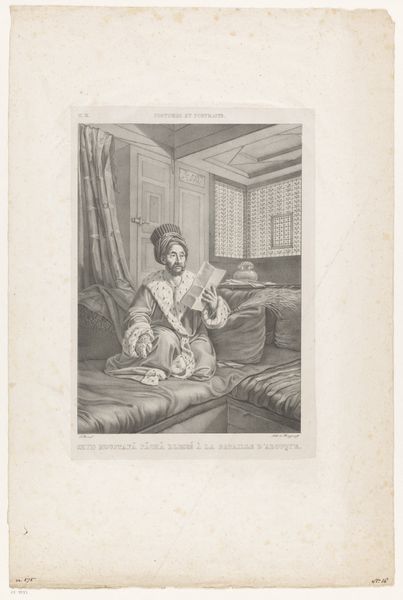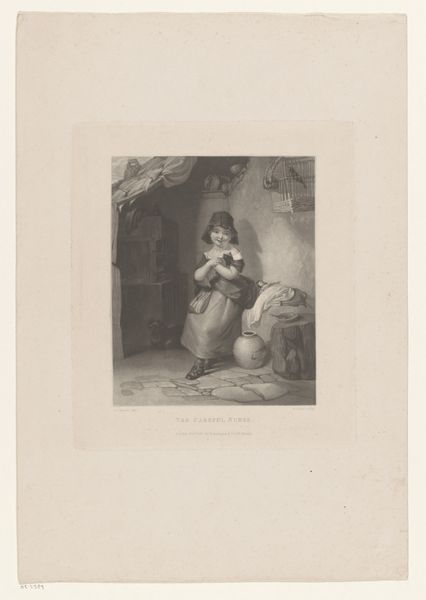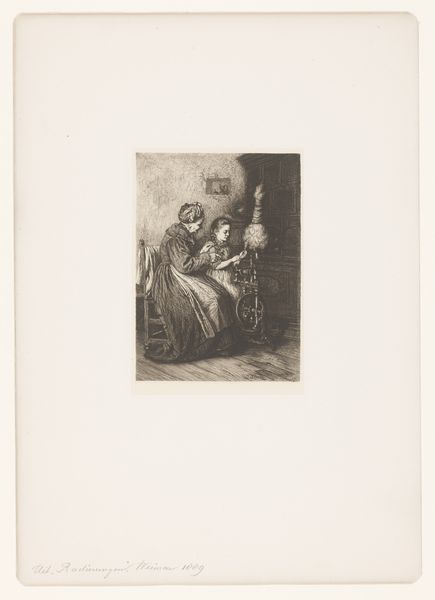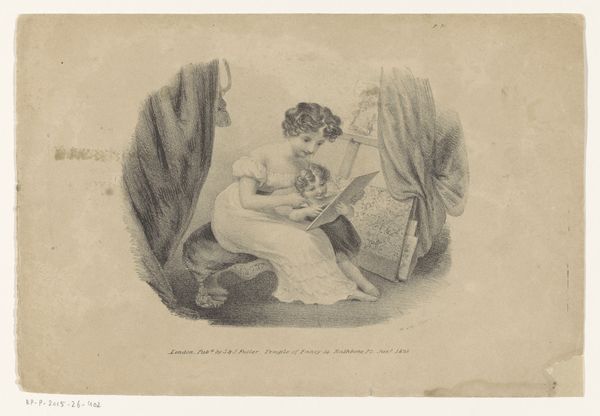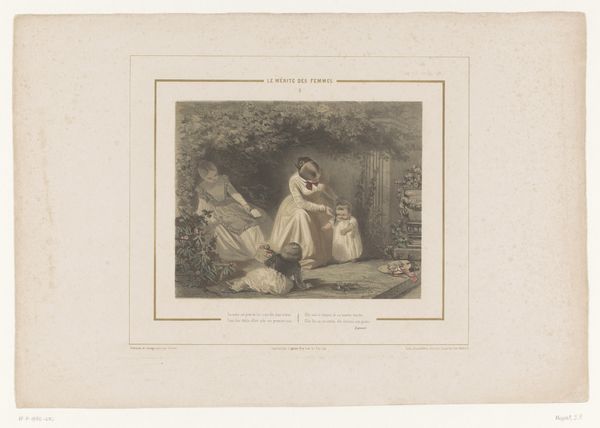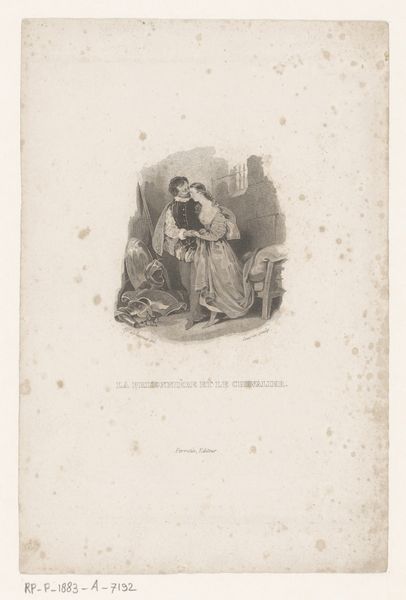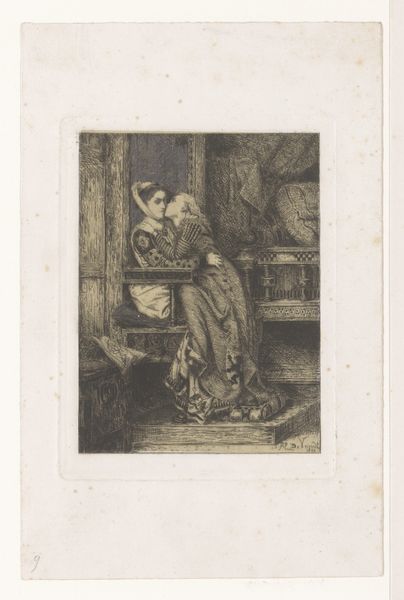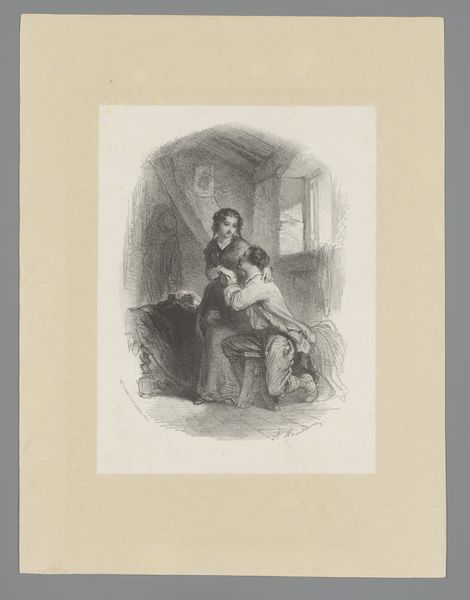
print, etching, engraving
#
portrait
# print
#
etching
#
landscape
#
genre-painting
#
academic-art
#
engraving
Dimensions: height 355 mm, width 270 mm
Copyright: Rijks Museum: Open Domain
Curator: Welcome. Today we will discuss Gijsbertus Arnoldus Gretser's "De schilder achter zijn ezel", created sometime between 1825 and 1864. It is an etching and engraving printed on paper. Editor: My first thought is one of contained creativity. He’s hemmed in by that stone window, almost like a performer on a stage, yet it has an undeniably intimate feel. Curator: Absolutely. Looking at this, I think about the romanticized role of the artist during the 19th century, situated in their studio as this solitary figure, detached from social upheavals, almost manufacturing art for a consuming bourgeoisie. There’s the distinct echo of genre painting conventions at play here. Editor: You're right; this could easily be an interior scene ripped straight out of the Dutch Golden Age! He’s very consciously evoking that period and tradition. The presence of the lute only bolsters this assertion; it could serve as an important insight to understanding how different eras viewed forms of art. Curator: Precisely, it reveals a certain cultural performance and artistic identity rooted in its understanding of history. The etching, and subsequent print, become vehicles to circulate those images beyond the studio or gallery space. I’m curious about the original painting that this etching reproduces; who was it for, and how would its reception differ compared to the mass distribution afforded by prints? Editor: I find it amazing that, regardless of those social and economic implications you point out, there's a universal truth to the solitary, deeply personal act of creation. That moment where nothing exists besides the artist and their medium… that the engraving preserves so brilliantly. It gives such gravity and humaneness to what could be viewed as just a document of another image from centuries prior. Curator: It definitely does prompt interesting points regarding artistic labour and consumption through its rich composition. This little etching manages to condense those layers of social complexities into this singular moment of representation, echoing sentiments and implications far beyond its physical form. Editor: Well said! I am left feeling incredibly humbled in witnessing its preservation through all this time. Curator: Indeed. It invites us to examine art's role within broader social and historical currents.
Comments
No comments
Be the first to comment and join the conversation on the ultimate creative platform.
